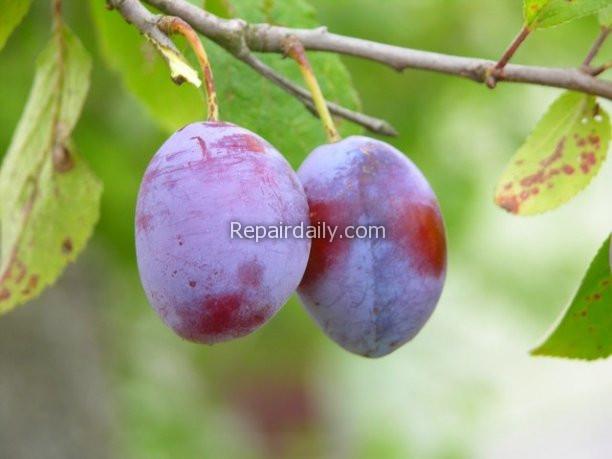

plums
Plum trees are among the cold-sturdiest fruit trees in a wide range of different species and cultivated varieties. Some tree varieties grow in regions with winter temperatures that are well below as little as zero degrees Fahrenheit. Unless you are not an agricultural science expert, differentiating the various plum tree types may be challenging especially when they are not fruiting. However, they can be distinguished based on so many characteristics, including noticing where they are growing. Visit Michaelangelo’s a Landscape company to help you maintain and improve the landscape for your plum trees
There are many plum tree varieties that you can grow, with mouth-watering fruits that span the color spectrum with beautiful shades of yellow, red, blue, green, and purple. The most common varieties of plum tree are, The Santa Rosa Plum, Burgundy plum tree, The Methley Plum, Elephant Heart Plum Tree, Italian Prune. Here are a few plum tree types
1. The Santa Rosa Plum Tree
The Santa Rosa Plum, also called Prunus ‘Santa Rosa’, is a plum fruit plant that was produced in the early 1900s in Santa Rosa, California. The Santa Rosa Plum tree is self-fertile and has flowers that give way to deep red fruits nestled in the bright green foliage. The flowers also put out a lovely display of pink and white flowers in the spring, creating a magnificent visual display in the landscape early in the growing season. Furthermore, you only need to plant one tree to enjoy a plentiful harvest. Click here
2. Burgundy plum Tree
The Burgundy Plum, also called Prunus salicina, is a self-fruitful plum tree variety that produces in mild climates, requiring 250-350 winter chill hours. As a result, you do not need to plant another plum tree to reap a great harvest. The burgundy plum tree produces more fruits than most other types of plums. They yield medium-sized, reddish-purple-colored plums that have a deep red, mellow, sweet flesh. Also, the tree has ornamental appeal in the spring with bright white flowers. Deep red fruit contrasting the light green foliage, and towards the end of the growing season, the leaves will turn red, giving you a beautiful display of fall color.
3. The Methley Plum Tree
The Methley Plum is a small, upright, spreading tree, a variety of Japanese plum, and one of the fastest-growing types of plum trees that you can add to your garden. Methley plum tree starts off the spring with snow-white flourishes that have a refined sweet scent that pervades your environment. Methley Plum is more vigorous and disease resistant and produces more flowers. In addition, Methley plum endures heat and needs only a short period of winter dormancy. The Methley Plum is also self-pollinating. Hence, you only need to plant one tree in your yard for a large harvest. The Methley plum fruit is spectacular, very soft and sweet, with reddish-purple skin and flesh with a deep reddish color.
4. Italian Prune Tree
Italian prune plum trees, scientifically called Prunus domestica, are an exceptional plum variety to grow. Through trimming, Italian prunes can be kept as dwarf trees around 10-12 feet (3-3.5 m.). Italian prune plum tree is self-fertile and winter resistant. The Italian Plum Tree produces a large harvest of freestone flavored fruit. Each season the Italian prune tree is covered in light pink flower blooms that fill the air with a lovely scent. The flowers give way to medium-sized fruits with deep blue-purple skin and yellow flesh. The Italian Plum tree works well in a small yard where space is limited because they are self-fruitful.
5. Elephant Heart Plum Tree
The Elephant Heart is a large, heart-shaped Japanese variety. The Elephant Heart plum tree is an ornamental fruit tree that produces greater than average fruit. Elephant Heart plum tree yields fruit with purple skin, sweet, delicious taste, and unique interior color.
Finally, you should always be cautious to avoid confusion when identifying the plum trees, especially those derived from the same species, such as the Methley variety and Burbank plum tree. Unlike the Methley plum tree, the Burbank plum tree can grow up to 35 feet tall and produces red and golden-yellow fruits. The Burbank plum tree also has leaves that tend to fold upward along the inner leaf vein and are light-colored on the undersides, often with superb hairs. Moreover, Plum trees do not only produce sweet fruits, but they also develop beautiful flowers, making them an excellent addition to your garden, especially during springtime. Other plum trees include Low Chill Plum, Satsuma plum tree, and Elephant Heart Plum Tree to name a few.
